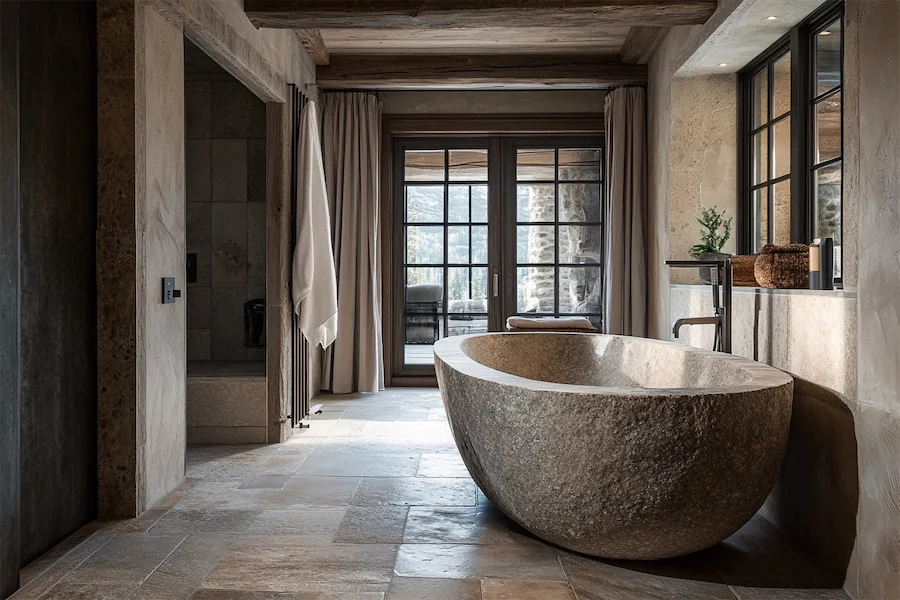Stone-clad bathrooms exude a timeless elegance, seamlessly blending natural aesthetics with modern design. This article delves into the facets of stone-clad bathrooms, exploring their history, key features, applications, considerations, and concluding thoughts.
Introduction to Stone-Clad Bathrooms
Stone cladding involves applying a thin layer of natural or simulated stone to walls or surfaces, enhancing the visual appeal and adding texture to interior spaces. In bathrooms, stone cladding introduces a spa-like ambiance, combining luxury with the organic beauty of natural materials.
History and Origins of Stone-Clad Bathrooms
The use of stone in bathing spaces dates back to ancient civilizations, where marble and granite adorned public baths and private sanctuaries. These materials symbolized wealth and sophistication. Over time, the evolution of interior design has embraced stone cladding as a means to replicate the grandeur of historical bathhouses while meeting contemporary aesthetic and functional standards.
Key Features of Stone-Clad Bathrooms
- Natural Aesthetics: Stone cladding introduces unique textures and patterns, creating a serene and organic atmosphere.
- Durability: Natural stones like granite, marble, and slate are renowned for their longevity and resistance to moisture when properly sealed.
- Versatility: Available in various colors, finishes, and sizes, stone cladding can complement diverse design styles, from rustic to modern.
- Thermal Properties: Stone retains heat, contributing to a warm and comfortable bathroom environment.
Applications of Stone-Clad Bathrooms
- Walls: Cladding entire walls or creating accent features adds depth and visual interest. For instance, a stone accent wall behind a bathtub can serve as a focal point.
- Floors: Stone flooring offers a durable and slip-resistant surface, enhancing safety and style.
- Showers: Stone-clad shower enclosures provide a luxurious, spa-like experience, with materials like stacked stone adding texture and elegance.
- Vanity Tops and Sinks: Stone surfaces for vanities and sinks exude sophistication and are easy to maintain.
Considerations When Choosing Stone Cladding for Bathrooms
- Moisture Resistance: Select stones with low porosity and ensure proper sealing to prevent water absorption and staining.
- Maintenance: Regular cleaning with appropriate products is essential to preserve the stone’s appearance and prevent damage.
- Installation: Professional installation is recommended to address challenges such as weight support and waterproofing.
- Cost: Natural stone can be expensive; consider budget constraints and explore cost-effective alternatives like cultured marble.
- Aesthetic Compatibility: Ensure the chosen stone complements the overall design theme and color scheme of the bathroom.
Conclusion
Incorporating stone cladding into bathroom design merges natural beauty with functional elegance. By understanding its history, features, applications, and considerations, homeowners and designers can create a bathroom space that is both luxurious and enduring.
